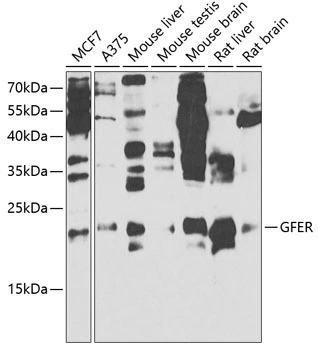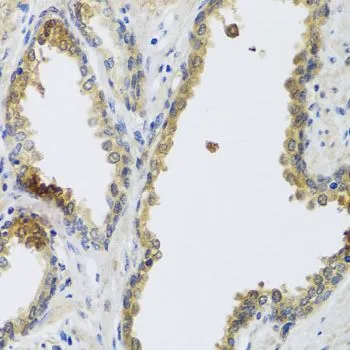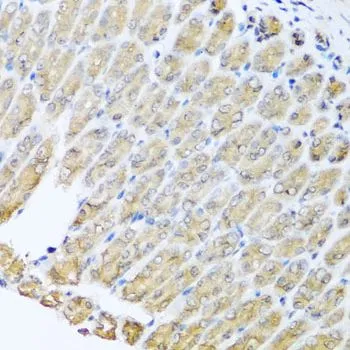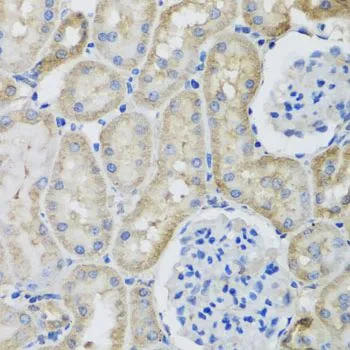
WB analysis of various sample lysates using GTX33219 GFER antibody. The signal was developed with ECL plus-Enhanced. Dilution : 1:1000 Loading : 25microg per lane
GFER antibody
GTX33219
ApplicationsWestern Blot, ImmunoHistoChemistry, ImmunoHistoChemistry Paraffin
Product group Antibodies
TargetGFER
Overview
- SupplierGeneTex
- Product NameGFER antibody
- Delivery Days Customer9
- Application Supplier NoteWB: 1:500 - 1:2000. IHC-P: 1:50 - 1:200. *Optimal dilutions/concentrations should be determined by the researcher.Not tested in other applications.
- ApplicationsWestern Blot, ImmunoHistoChemistry, ImmunoHistoChemistry Paraffin
- CertificationResearch Use Only
- ClonalityPolyclonal
- ConjugateUnconjugated
- Gene ID2671
- Target nameGFER
- Target descriptiongrowth factor, augmenter of liver regeneration
- Target synonymsALR, ERV1, HERV1, HPO, HPO1, HPO2, HSS, MMCHD, MPMCD, FAD-linked sulfhydryl oxidase ALR, ERV1 homolog, erv1-like growth factor, hepatic regenerative stimulation substance, hepatopoietin protein
- HostRabbit
- IsotypeIgG
- Protein IDP55789
- Protein NameFAD-linked sulfhydryl oxidase ALR
- Scientific DescriptionThe hepatotrophic factor designated augmenter of liver regeneration (ALR) is thought to be one of the factors responsible for the extraordinary regenerative capacity of mammalian liver. It has also been called hepatic regenerative stimulation substance (HSS). The gene resides on chromosome 16 in the interval containing the locus for polycystic kidney disease (PKD1). The putative gene product is 42% similar to the scERV1 protein of yeast. The yeast scERV1 gene had been found to be essential for oxidative phosphorylation, the maintenance of mitochondrial genomes, and the cell division cycle. The human gene is both the structural and functional homolog of the yeast scERV1 gene. [provided by RefSeq, Jul 2008]
- Storage Instruction-20°C or -80°C,2°C to 8°C
- UNSPSC12352203








